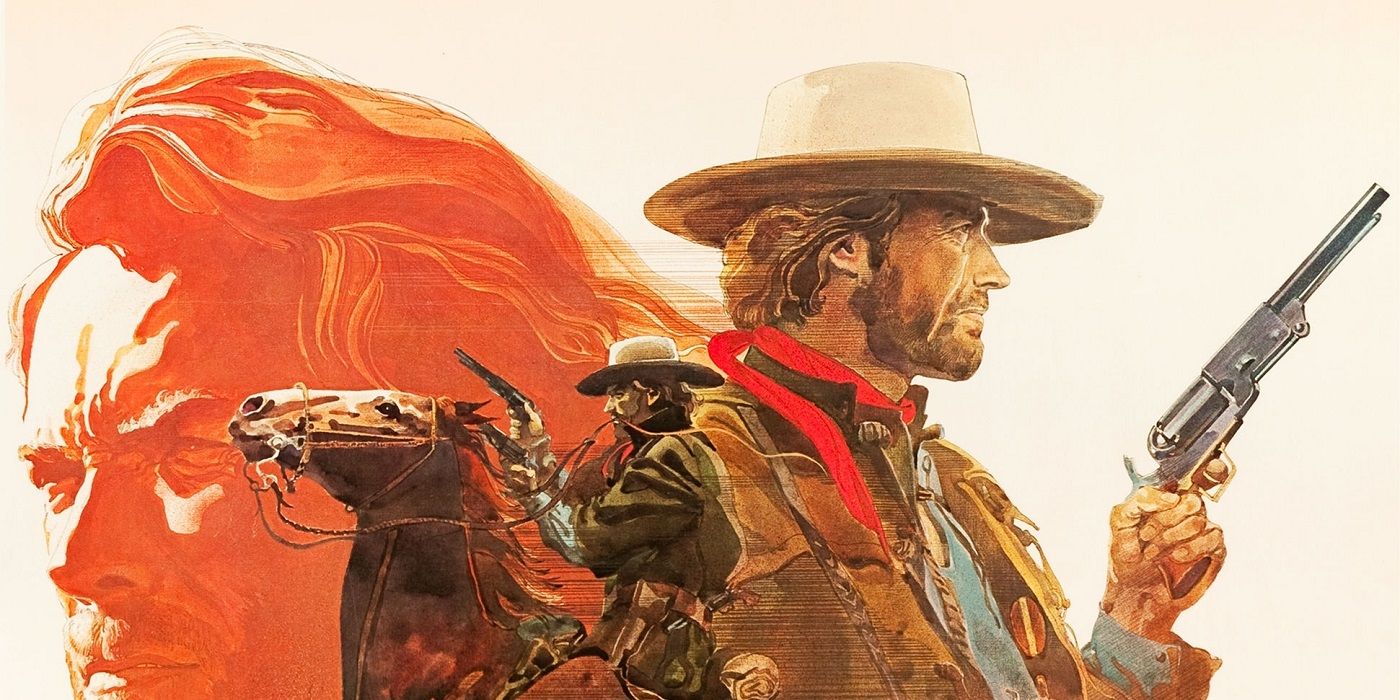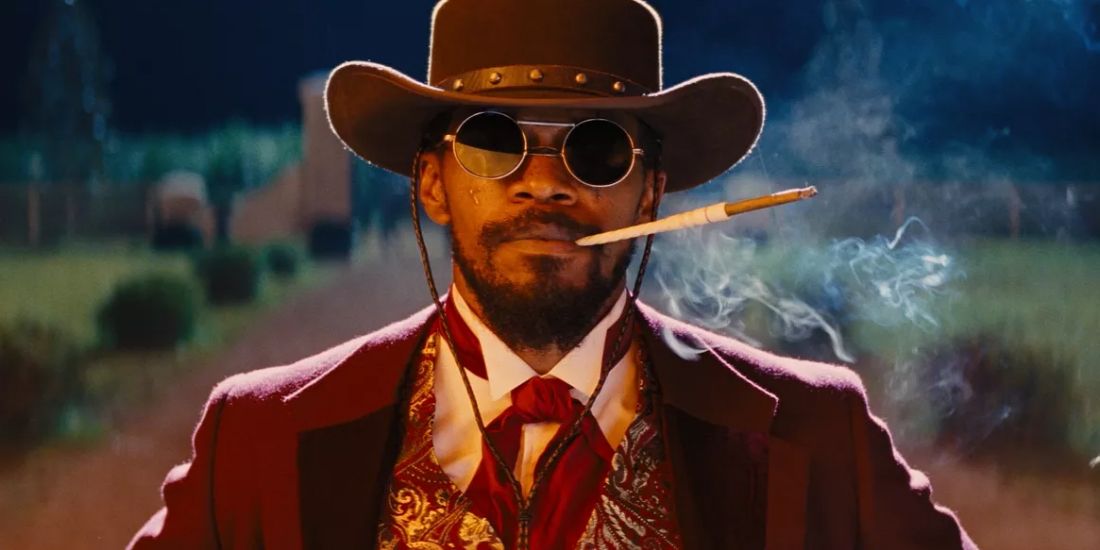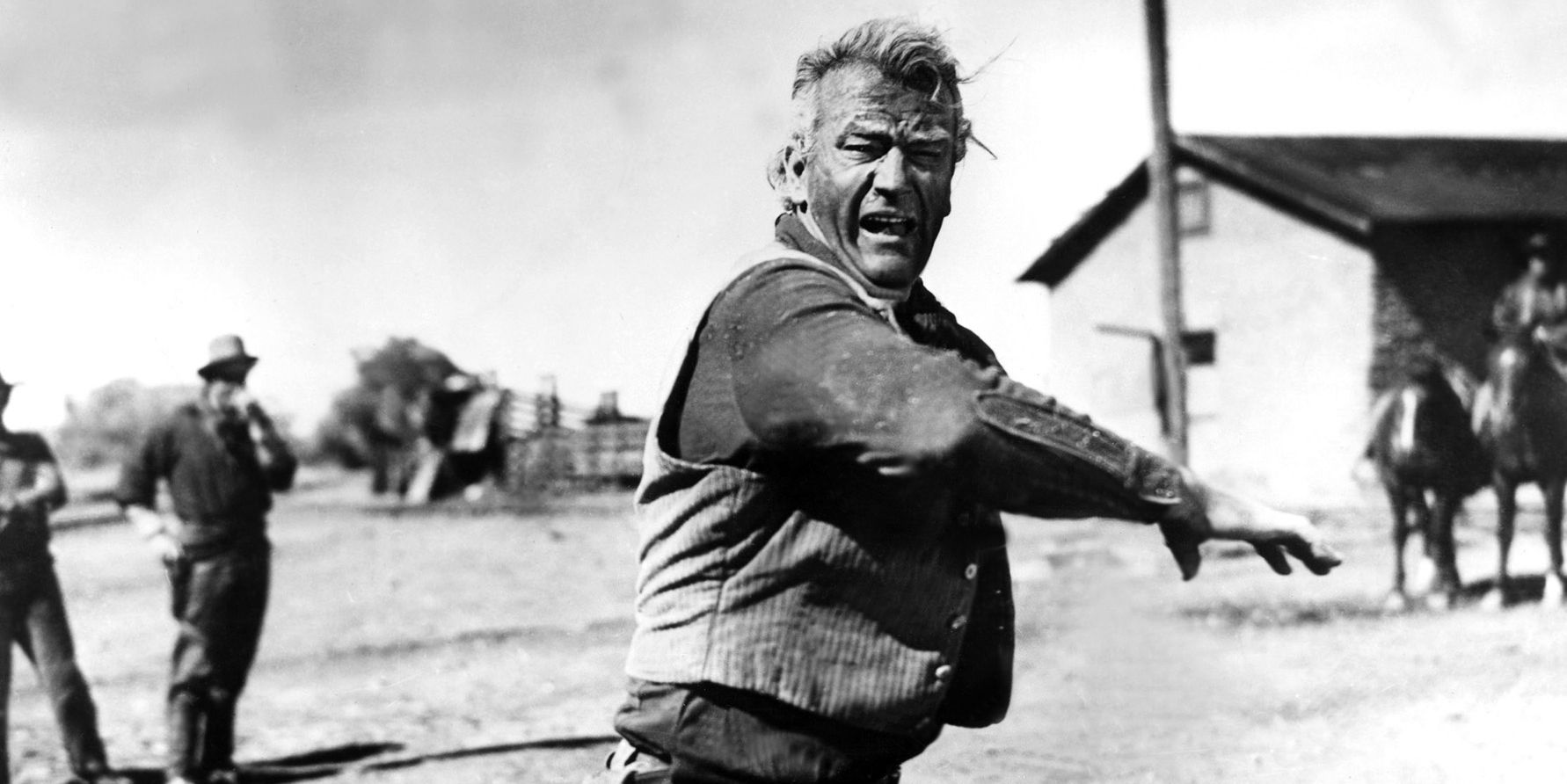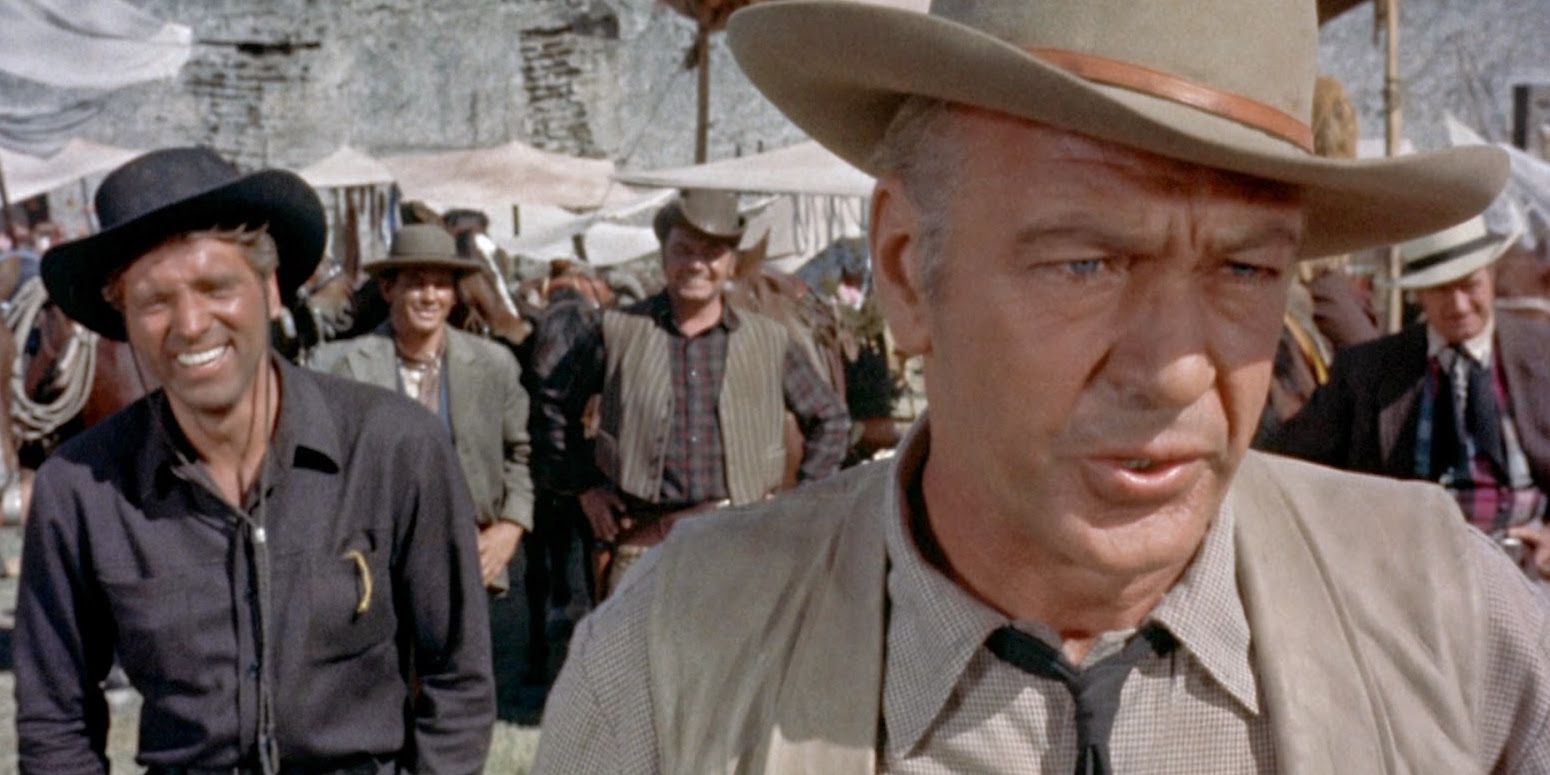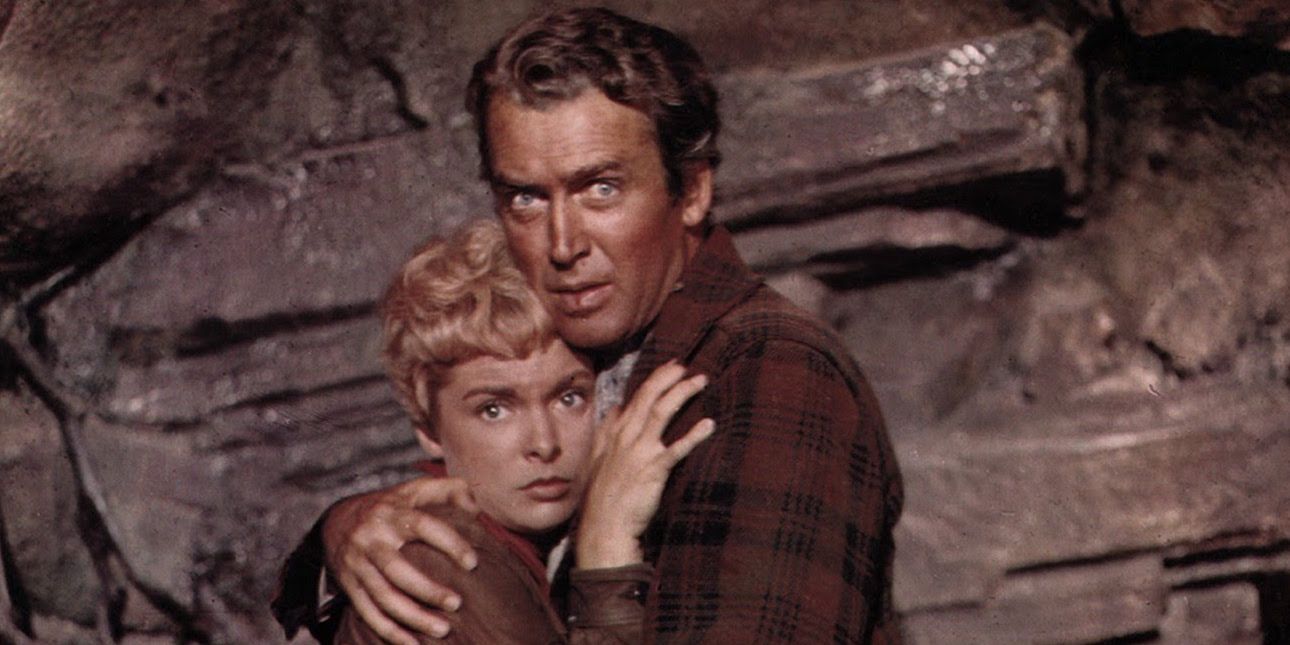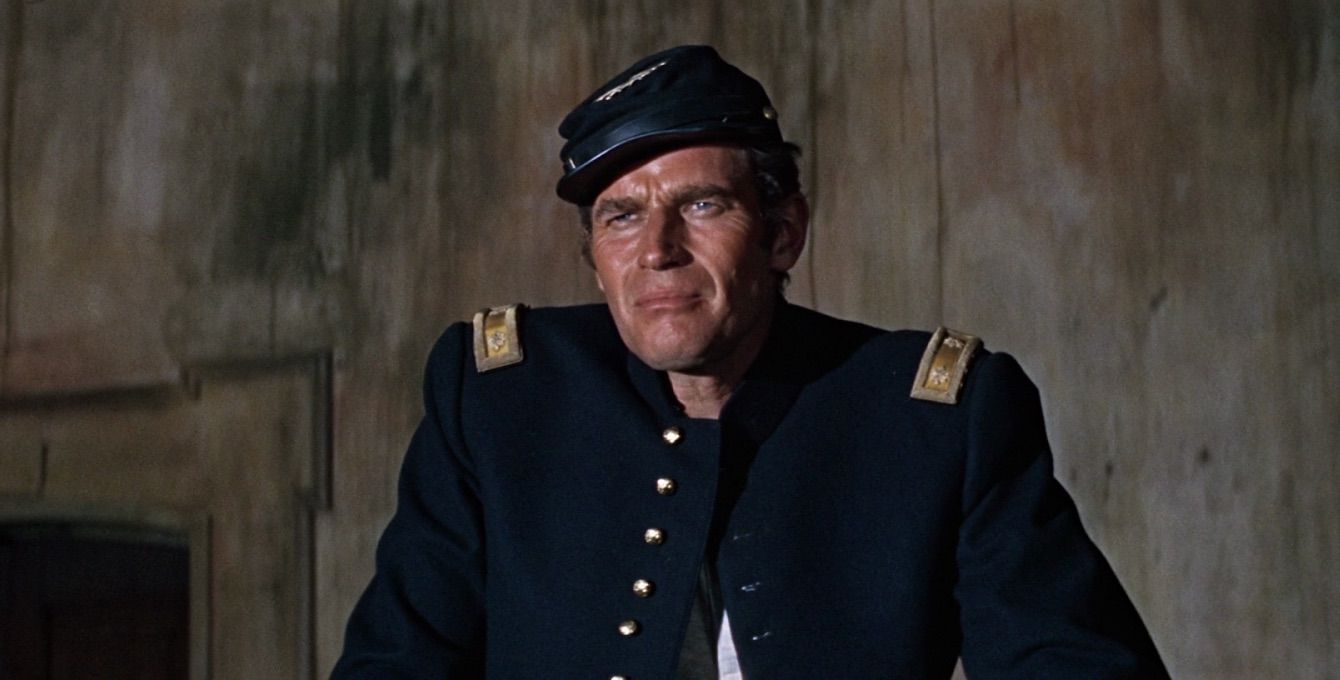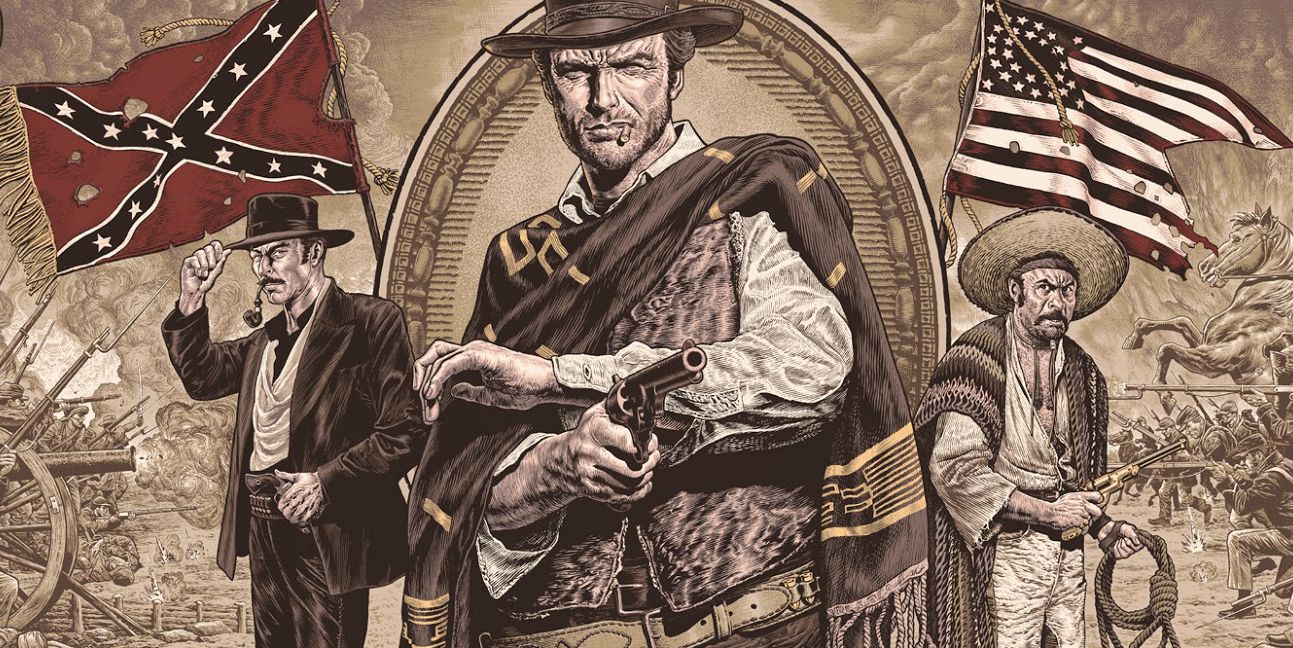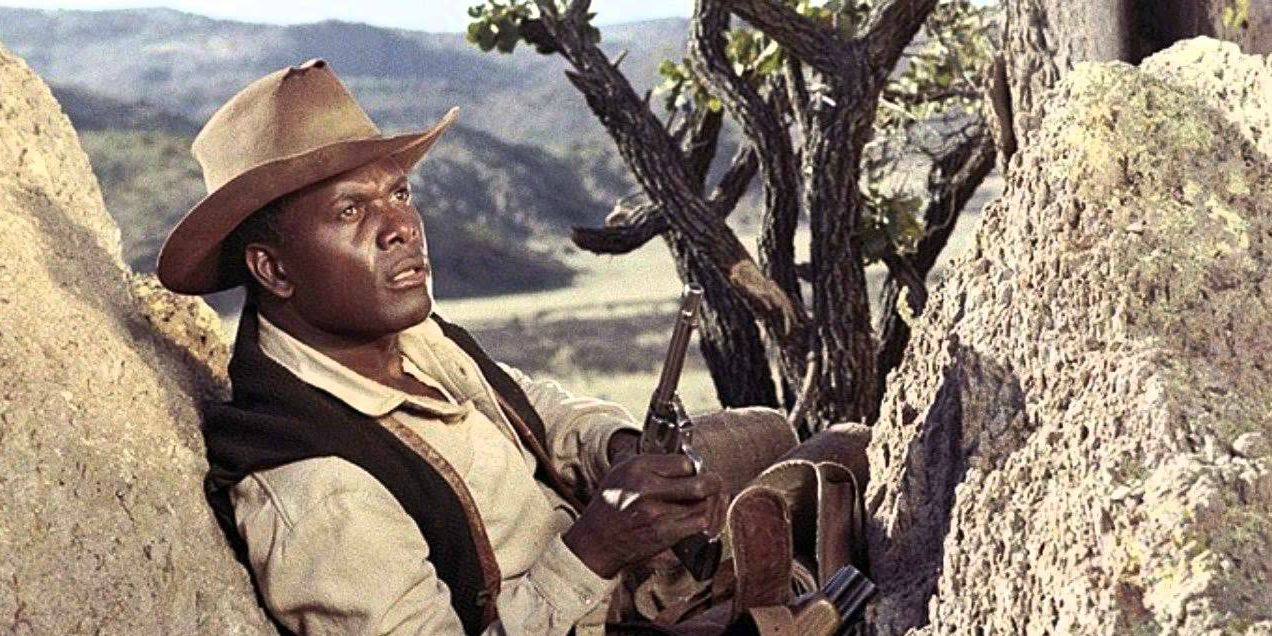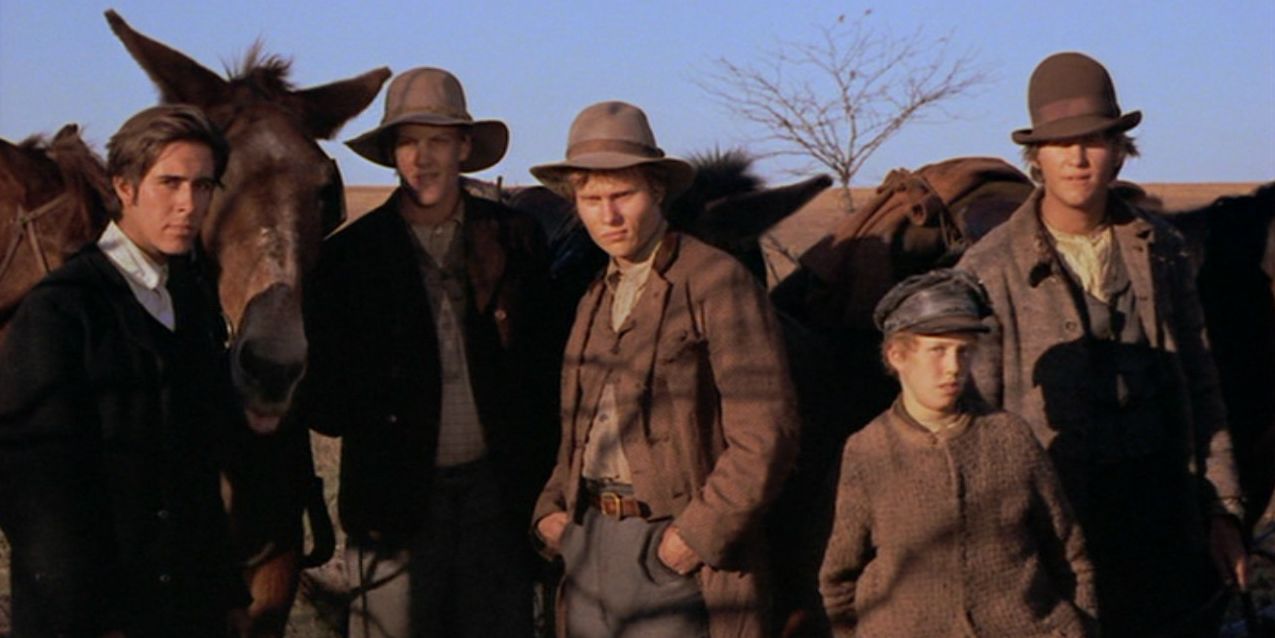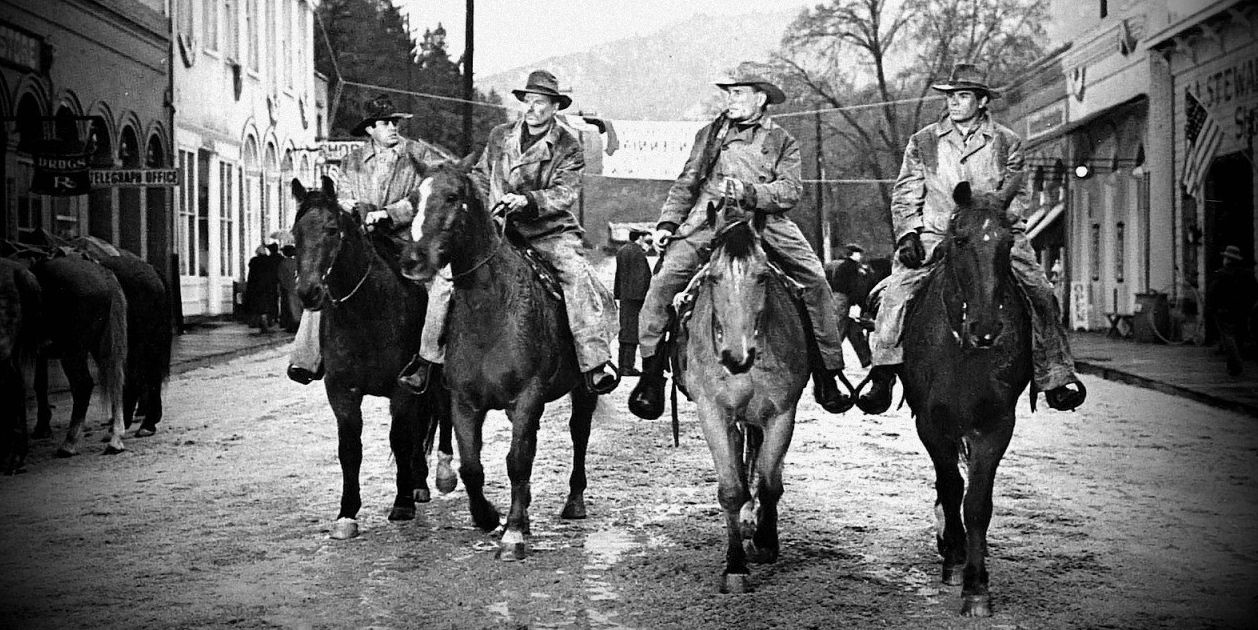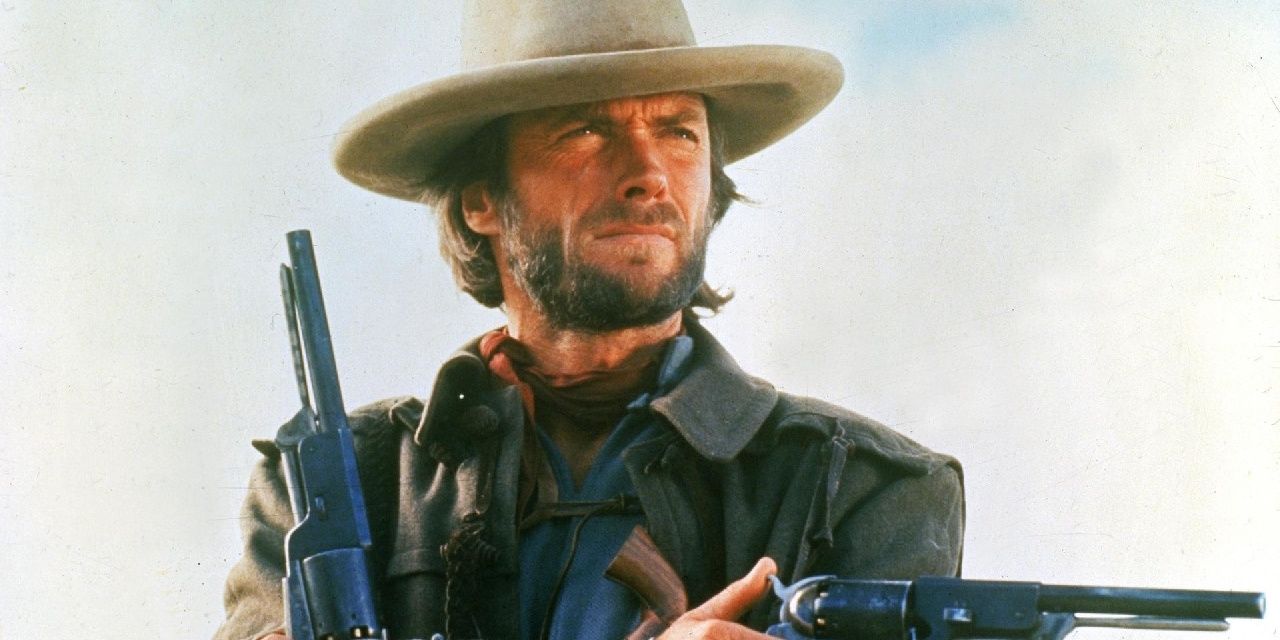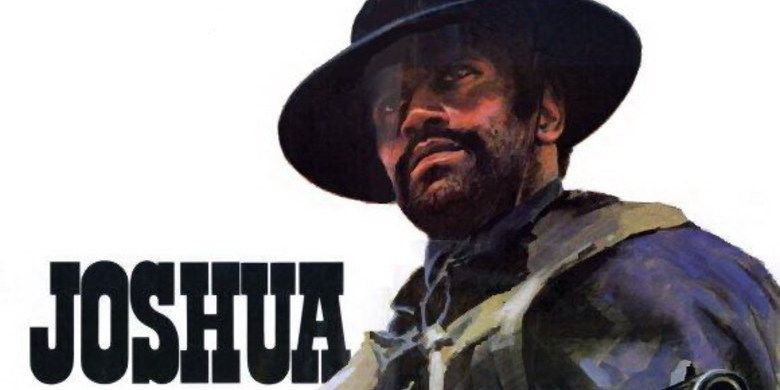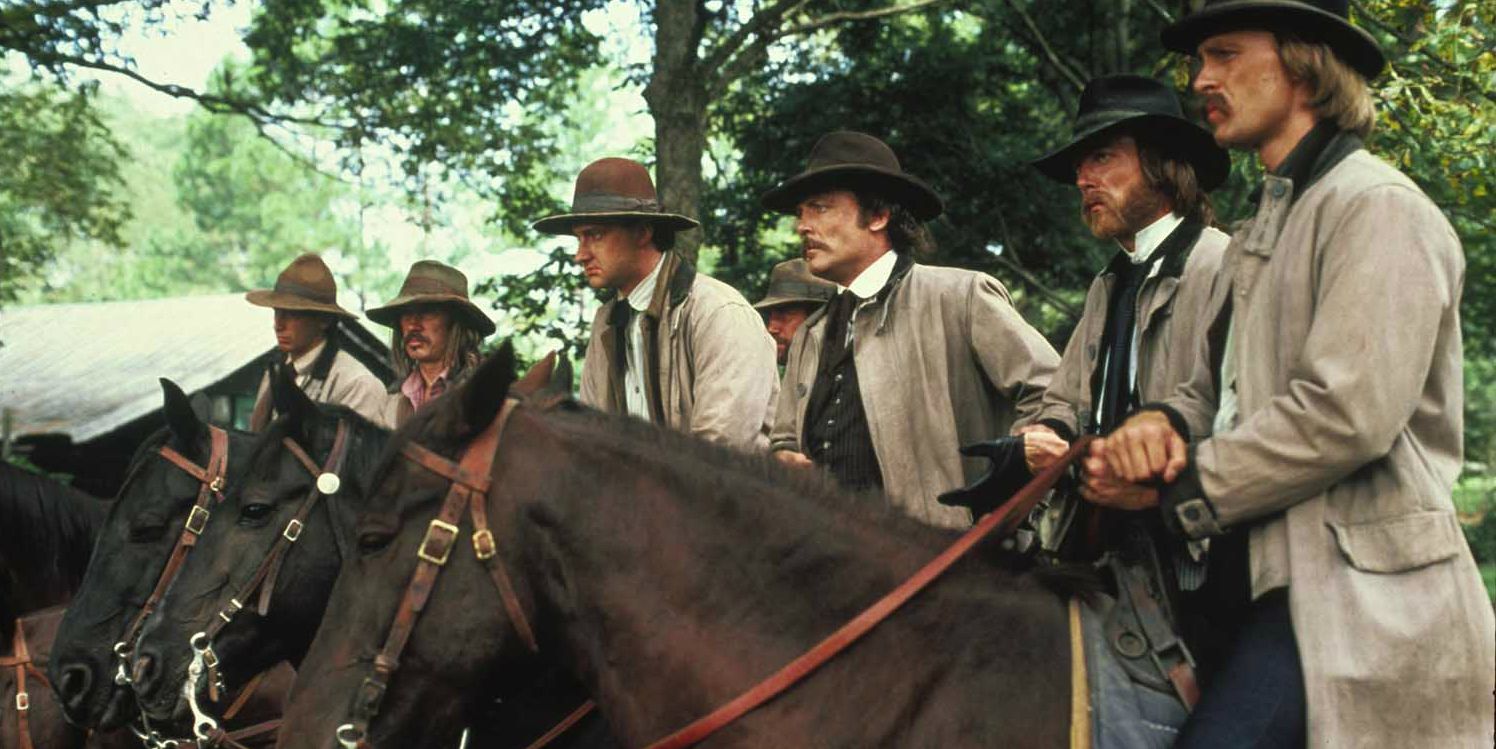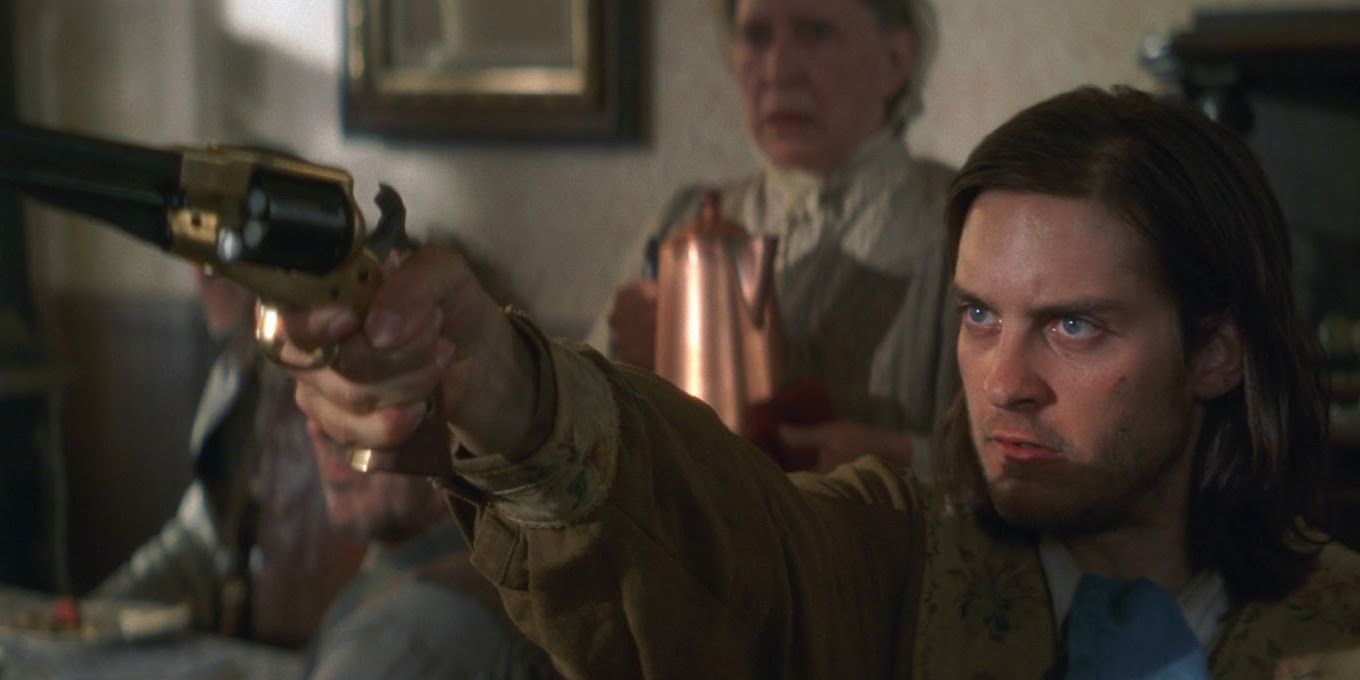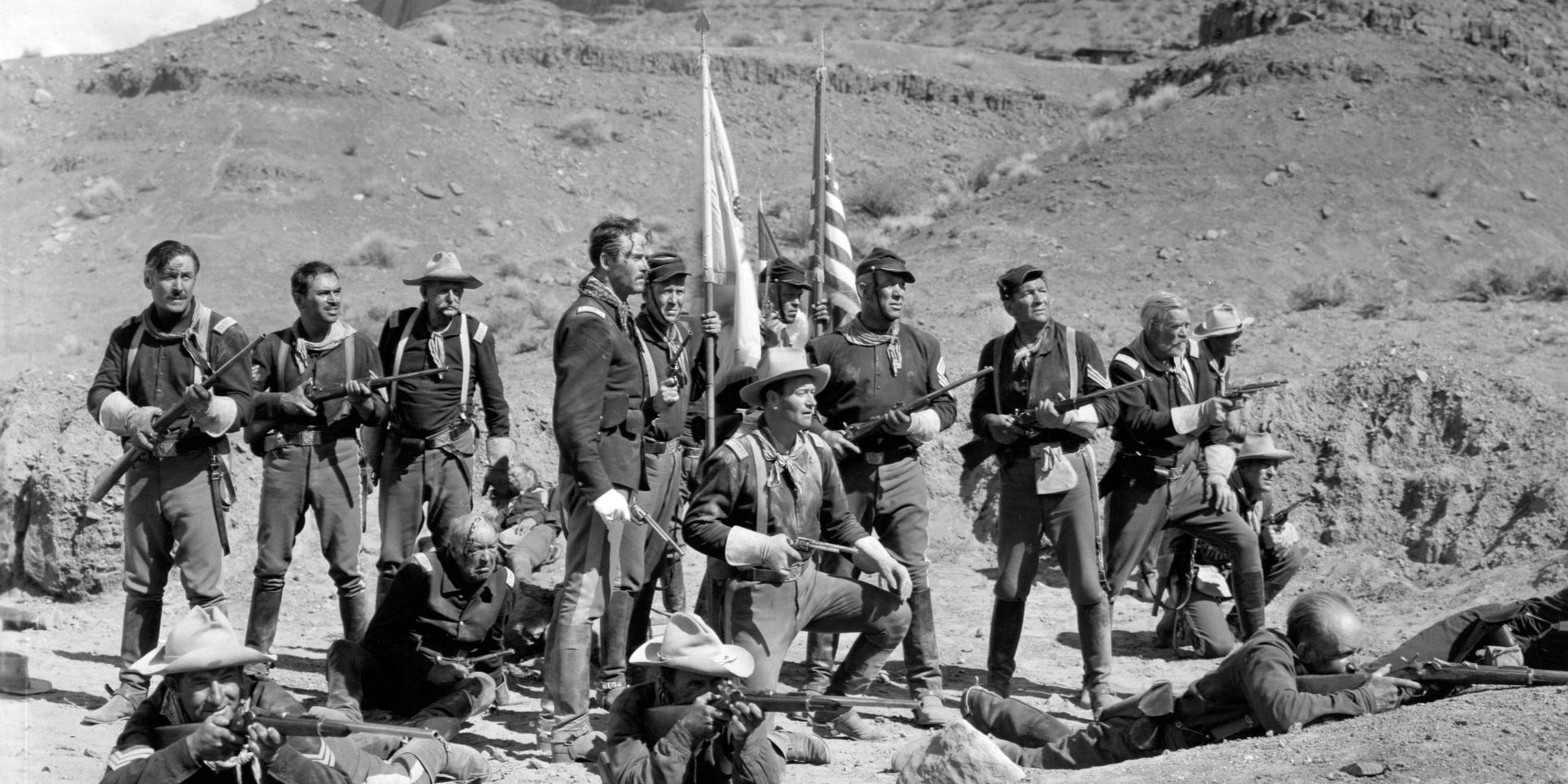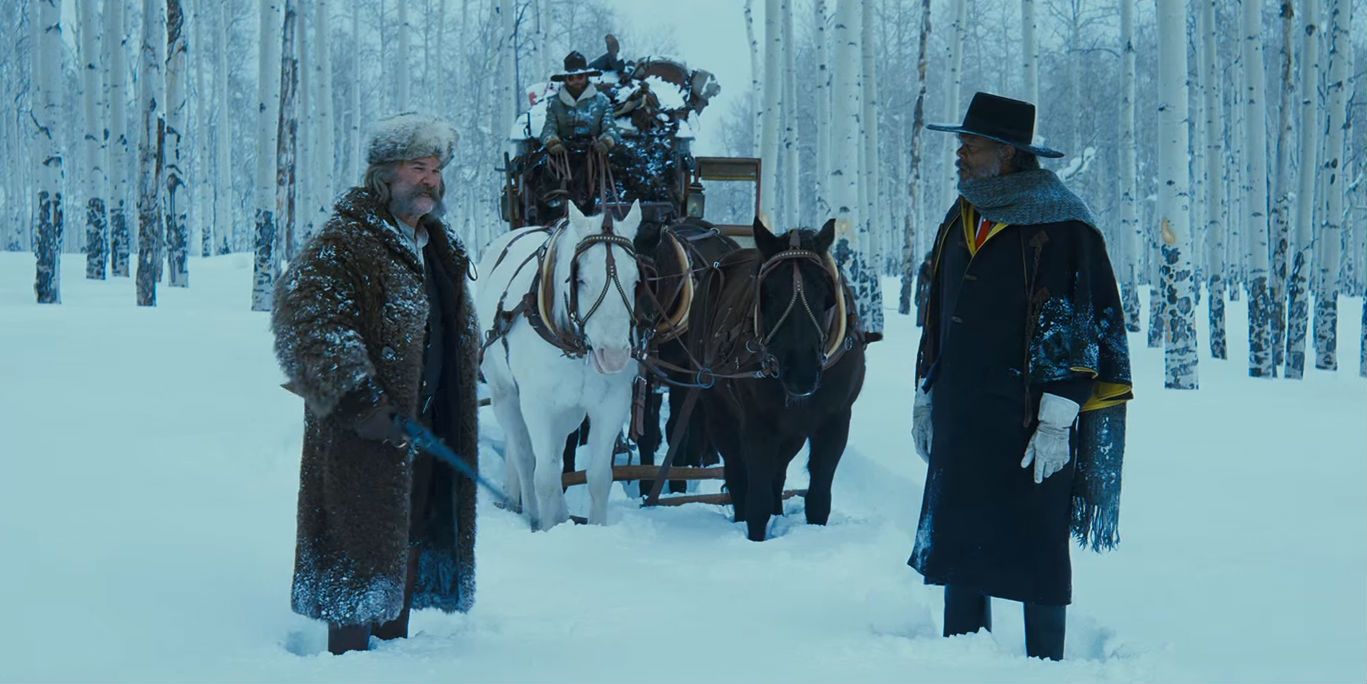The Civil War is arguably the defining event of American history, a conflict that is still in many ways unresolved. Unsurprisingly, a lot of movies have resulted from this. Most recently, The Free State of Jones, which tells the story of a southern man who teams up with former slaves to battle the Confederation from within.
Somewhat more surprisingly, a lot of these films have been westerns, which use the escalating conflicts that lead to, and the aftermath of, the Civil War as fuel for their plots. Here are The 15 Best Civil War Westerns Of All Time.
15. Django Unchained
Tarantino has suggested that his Django Unchained, which uses the iconography of the Western cowboy to run riot through the Antebellum South, should be termed a "Southern" (interestingly enough, this term would only work for a handful of the films on this list). It's as good a term as any for this borderline indescribable film, a dizzying, brutal act of wish fulfillment about a freed slave who enacts a brutal revenge on slave owners while on a quest to save his wife.
At the time, many criticized the film for turning slavery and racism into something cartoonish, never mind that even the most outrageous indignities and violence in the film is drawn from life, but what Tarantino did was something even more remarkable, he made slavery unfamiliar. Not merely an ugly fact of history class, but something startling and absurd in its injustice. That he achieved this not through solemnity but through irreverence makes a brutal kind of sense.
14. Red River
Red River, which tells the story of a cattle rancher who is nearly ruined by the Civil War, is another film in which Wayne bucks the expected rules of his persona. Instead of a confident patrician presence, Wayne, as the rancher who stakes his fortune on a make or break cattle drive, becomes a dark-eyed, haunted figure. His personal ruin is juxtaposed against the stark beauty of the landscape he rides through, shot in almost unbearably rich black and white.
Red River is also a change of pace for director Howard Hawks, best remembered for being the greatest director of the ensemble cast in the first half of the twentieth century. There are great supporting characters in Red River, but the central conflict is between two of them, Wayne and his adopted son, played by Montgomery Clift with his usual damaged poeticism. Though it doesn't draw as much from the Civil War as some of the other films on the list, Red River is a reminder of what cataclysmic reverberations the war sent through our society, and how it set in motion even peripheral stories as epic as this one.
13. Vera Cruz
Brightly colored where Fort Apache was starkly black and white, swashbuckling where Apache was elegiac, and about as much fun as films are legally allowed to be, Vera Cruz is pretty much the exact opposite of what postwar films are supposed to be. The film follows Gary Cooper as a veteran who drifts down to Mexico to look for mercenary work after the war has ended. There, he runs into a renegade played by Burt Lancaster and the two begin a long series of one-ups and double-crosses until eventually joining forces to steal $3 million in gold from their employer.
It's classic Hollywood melodrama at its best, filled with duels, plot twists, easy banter and great character actors (Charles Bronson AND Ernest Borgnine, how's that for a twofer?) all packed into 94 minutes by director Robert Aldrich. Try getting that kind of efficiency from your multiplex entertainment today.
12. The Naked Spur
Though not as iconic as the films that John Wayne made with John Ford, or the westerns Clint Eastwood made with Don Siegel, the cycle of films that director Anthony Mann made with James Stewart stand out as some of the finest westerns ever made. Of these, The Naked Spur is arguably the best, following Stewart as a veteran and bounty hunter whose land was sold out from under him while he was away at war. He's spent the postwar years trying to earn the money to buy it back by hunting a group of dangerous, desperate men while fighting off his own inner demons.
The Mann films incorporated the psychological darkness and frank violence of film noir and juxtaposed it against the wide open spaces of the American wilderness, creating movies both vividly beautiful and disturbing. Stewart's channeled his own experiences as a veteran into his character; working through what to the modern viewer is unmistakably PTSD. All of the Mann/Stewart films are worth watching, but start with this one.
11. Major Dundee
This film's making was nearly as contentious as the Civil War itself. Sam Peckinpah's third film was the first to include one of his legendary battles with the powers-that-be at the studio. After a reported four hour, 38-minute cut was chopped to a mere two hours, the film was relegated to the status of cautionary tale. However, a "restored" version that put back a whole thirteen minutes of lost footage inspired a reconsideration.
Sadly, Major Dundee is not a masterpiece and probably never was. It's a big ungainly thing, at war with itself, halfway between the revisionist epic it wants to be and the straightforward heroic picture it's forced to be. But these contradictions make it more fascinating, not less. The film follows Major Dundee (played by a teeth grinding, ever-enunciating Charlton Heston) a soldier demoted during the war to managing a prison camp in New Mexico. After several attacks by Apache Guerrillas, Dundee marshals a command comprised of Union prison guards and Confederate Prisoners, promptly invades Mexico and gets into a war with France somehow. It has a strange plot, to say the least.
It's a movie about divided loyalties that is itself divided. One can feel the tension in the iconoclastic Peckinpah as he goes from admiring the sheer hubris of Dundee to being appalled by his overreach, sometimes within the space of a single scene.
Most of its pleasures come for the modern viewer comes from the interplay of its cast. Including Heston, who, though currently out of vogue, is the type of larger-than-life figure to pull all of this off, and Richard Harris, who brings the full force of his Irish bluster and flair to the leader of the Confederates. Brock Peters, James Coburn, Slim Pickens, LQ Jones, Ben Johnson and Warren Oates fill out a cast that looks like the result of a drunken game of "Western Character Actors Bingo."
10. The Good, The Bad and The Ugly
The three titular characters in The Good, the Bad and the Ugly care about nothing but themselves. That's the whole point. Far from fighting for a cause they'd laugh at the very notion; since the three are waging their pitched battle in the middle of the Civil War this can be a little tough to do. But they mostly manage.
Still in one of the very best set pieces of the film (and given that the film is nothing but great set pieces this is saying something) Blondie (The Good) and Tuco (The Ugly) end up caught in a pitched and pointless battle over a contested bridge. The fight has long since devolved into a bloody meat grinder of a stalemate and since there's no other way through the two decide to end the battle in rather spectacular fashion. It's director Sergio Leone at his best, operatic, intense, sentimental ("Could you help me live just a little longer? I'm expecting good news") poetic, cold and above all almost unbearably badass. Just like the film as a whole.
9. Buck And The Preacher
The '70s saw the flourishing of the revisionist western, whose seeds can be seen in Major Dundee, and the spaghetti western, which reached the peak of its form with The Good, the Bad and the Ugly. Somewhere between the two lies the influx of Black westerns. Though the tradition of the black cowboy movie stretches back to the '30s and Herb Jefferies, the '70s saw an increase of the subgenre's popularity, which combined the political consciousness of the revisionist westerns and the increased violence of the spaghetti.
One of the best examples is Buck and the Preacher, starring and directed by Sidney Poitier and also starring Harry Belafonte. The film takes the old western trope of the scoundrel and the straight man. One a frontiersman leading a group of freed slaves into the western territory, the other a conman trying to prey off them, the two eventually team up against a team of vicious bushwhackers. The film delights in turning traditional western iconography on its head, climaxing with a group of Native Americans riding to the rescue against the cavalry. Buck and the Preacher has never been as popular as it should be, but it's begging for rediscovery.
8. Bad Company
Bad Company is a western after the '70s own heart. Loose, improvisatory, shot by the prince of darkness himself, Gordon Willis (The Godfather), and directed by the bizarrely ubiquitous Robert Benton. It follows a young man who dodges the Union draft and falls in with, well, some bad company. The newly formed crew heads west, with no greater aim than to stay out of the war's way.
Bad Company isn't a great film, it's episodic and unfocused and not always to its benefit. But it's worth watching just to see so much talent in its prime. This is only the third movie Jeff Bridges starred in (behind The Last Picture Show and Fat City) and he makes a good rogue. The film's point of view is obviously as influenced by Vietnam as it is The Civil War, but that doesn't necessarily make it invalid. Far from it, it's actually interesting to see the characters treat the defining conflict of their age as just an inconvenience.
7. The Great Northfield Minnesota Raid
The Great Northfield Minnesota Raid is the story of one of the most famous bank robberies of all time. The fact that it was famous for having just about everything go wrong during its execution makes for an interesting film. The robbery was perpetuated by Jesse James and the rest of the infamous James/Younger gang, a band of Confederate Bushwhackers who stayed together after the war and just started robbing stuff. After they were offered amnesty by the state of Missouri, the James Younger Gang responded by attempting to rob "the biggest bank west of the Mississippi."
The Great Northfield Minnesota Raid was more or less the end of the gang. A series of disasters that would be unfair to give away strike during the robbery. The film is set apart by Phillip Kaufman's assured direction, and Robert Duvall's reptilian performance as the coldest, scariest Jesse James ever put on film, a title for which there is no small amount of competition.
6. The Outlaw Josey Wales
After making his name by driving the western into ever more brutal and violent territory, Clint Eastwood took the genre back in the direction of folklore with The Outlaw Josey Wales. After his wife and child are killed by guerrilla Red Leg troops, Josey Wales joins a group of confederate irregulars only to find his reputation and legend almost impossible to leave behind after the war is over.
Though the film starts as a standard revenge thriller, with first his family and then his troops serving as fuel for Clint's righteous scowl and fury, the film takes a stranger, more memorable turn. Breaking down into a series of vignettes the story of which eventually becomes one of forgiveness and abstaining from vengeance, albeit one in which a whole lot of people die along the way. It's arguably here that Eastwood, whose relationship with cinematic violence has always been more complex than his critics gave him credit for, starts to turn into a great director.
Using his larger-than-life character to really dig into the myth and meaning of American heroism. Whether it's a simple matter of killing the most people, or something deeper, and the toll becoming a legend takes on a person. Themes that have concerned Eastwood for the rest of his career, and to which he has never provided easy answers.
5. Joshua
Though not as famous as the blaxploitation crime films that flourished at the same time, the exploitation era of the '70s produced a fair crop of Black Westerns, a full five percent of which can have their titles typed without a preliminary paragraph of throat clearing. The great Fred Williamson starred in a fair amount of these and it'd be fair to say they were close to his heart. Williamson wrote as well as starred in Joshua, the story of a former slave and union soldier whose mother is murdered and who hunts down outlaws who killed her.
Joshua is low budget even for an exploitation film, and for the most part consists of cross cutting between Williamson and the five truly unpleasant outlaws he's chasing. It gets repetitive even at 82 minutes, and there are some fairly odious rape scenes along the way. But Williamson's charisma is not to be denied and he cuts a great figure across the horizon.
4. The Long Riders
Yes, the Great Northfield Minnesota Raid seems to have been a nigh irresistible subject matter for filmmakers during this time. The Long Riders is another take on the same story, though it focuses more on the aftermath and less on the run up (the two films are almost complimentary in that way). The question of which you prefer comes down to director approach.
Walter Hill puts as much grit into the film as he can (few directors handle cinematic violence as well) and has the ingenious idea of casting real groups of brothers as the siblings that made up the James/Younger gang (it's something of an irony that this film has the better cast overall, but The Great Northfield Minnesota raid has the best Jesse James in a walk) as a result the cast has a chemistry that can't be faked. The Long Riders is a less poetic film than The Great Northfield Minnesota Raid, but it's the very lack of sentimentality that makes it land with as a kick to the ribs.
3. Ride With The Devil
Daniel Woodrell's novel, Woe to Live On, is poetic, funny, brutal and at times desperately sad. Ang Lee's adaptation is poetic. In his continued quest to have the most eclectic filmography of all time, Ang Lee tackled the Civil War with Ride With The Devil. It's a flawed film, but a fascinating one, following a group of Confederate Bushwhackers as they wage guerrilla war against the Union.
The weaknesses come mostly from the cast, which is filled with '90s "would-have-beens" like Skeet Ulrich, and stunt casting that doesn't pay off, like Jewel as the female lead. Weighed against that is the sheer beauty of the film, thanks to career best cinematography by Frederick Elmes (one of David Lynch's and Jim Jarmusch's key collaborators) and sequences of sustained brilliance like the massacre at Lawrence, Kansas which is a scene of sustained violence as upsetting as anything in American film.
The film fits in neatly with Lee's favorite themes of repression, given its best expression in Jeffrey's Wright's character, a freed slave fighting for the Confederacy for reasons of personal loyalty. Most of the main characters are fighting out of loyalty, rather than political ideas, but as the Lawrence Kansas sequence so brilliantly displays it doesn't matter what motivation or ideals gets you there, war is hell. If Lee can't quite get all the juice out of Woodrell's novel, that's because precious few filmmakers could. As is, Ride With The Devil stands as a fascinating experiment, and one of the few films to remember that as much brutality took place off the battlefield during the Civil War as on it.
2. Fort Apache
Set in the American West, Fort Apache follows John Wayne as an experienced Civil War veteran who becomes the reluctant second-in-command to a callow, vainglorious officer played by Henry Fonda, whose hunger for glory causes him to provoke a battle with the Native Americans.
Those who only know Wayne's and Ford's films by their reputation alone might be surprised at how even handed and morally complex the film is. The movie's central conflict isn't between the Calvary and the Native Americans, but between Wayne, who has actually been to war and seen its cost and the younger officer who was safe at West Point for most of the war. The conflict reflected director John Ford's own experience. Ford returned from World War II deeply shaken, having documented major battles from Midway to D-Day and had little patience for the cheap glorification of battle in his films from that point on. Fort Apache is one of Ford's best, and the opening chapter in his Calvary Trilogy, one of the major achievements in American film.
1. The Hateful Eight
One has to marvel that Tarantino somehow drew the most controversy in his career from a movie that mostly consists of eight people in a room talking to each other. Then again, given that the movie is in part about the power of language when weaponized, maybe it's not all that surprising. The Hateful Eight is at its core a powerfully angry elegy, one composed of equal parts black humor and despair.
The Hateful Eight is a movie built up from the bones of the Civil War. A movie about a group of shady outlaws, bounty hunters and renegades holed up together in the midst of a blizzard, more or less looking for an excuse to kill each other. Some find that the Civil War and the wounds it left make a mighty fine reason indeed. We would not be the first to note that if Tarantino's previous two films are giddy revisionist epics, history the way we wished it happened, then The Hateful Eight is history as the way it actually happened. There are so many bodies under the foundations that the floorboards might burst and that's certainly not going to deter us from piling more on top.
-
Can you think of any other Civil War westerns that could have made this list? Let us know in the comments!

